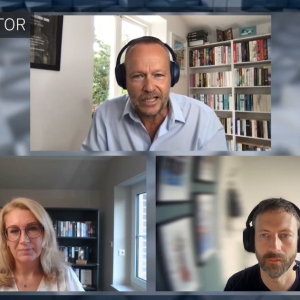The acquisition will create a company that will generate around $2.8bn in annual revenue, which PeopleSoft maintains will make it the second largest enterprise applications player in the world.
If the acquisition goes ahead, the duo will command an estimated 17% of the enterprise applications market, made up of PeopleSoft’s 12% and JD Edwards 5% share. While this will not increase the pressure on market leader SAP AG with 54% market share, it will impact closest rival Oracle Corp plus the lower ranks of the ERP suppliers as the two stable and respected companies gain further stability and financial credibility.
In a conference call to discuss the announcement, PeopleSoft president and CEO Craig Conway said the acquisition could not be more compelling, while JD Edwards CEO Bob Dutkowsky said the merger would make a dramatic and positive impact on shareholders, customers, partners and employees.
Although they both supply enterprise business applications the two vendors actually have little in common on an operational level and that is precisely why the two CEOs say the move is a good one, maintaining that as their activities complement each other rather than overlap, there are substantial cross-sell and up-sell opportunities plus some scope for expertise transfer.
Where PeopleSoft is strong in the high end enterprise sector, JD Edwards is a mid market specialist; PeopleSoft has strength and depth in human resources (HR) which JD Edwards lacks, while JD Edwards can offer the supply chain software which is one of PeopleSoft’s weak points; PeopleSoft is grounded within services companies, while JD Edwards has its roots in the asset-heavy manufacturing sector. During the last quarter the two companies had only 16 customers in common in thier prospects pipelines.
Conway explained that the aim is to leverage each others’ expertise to increase overall market opportunities, with PeopleSoft pulling JD Edwards’ domain expertise in manufacturing up into the high end enterprise market while JD Edwards pulls PeopleSoft’s HR capability down into the mid market for instance. Certainly there is a need for PeopleSoft to boost its supply chain and manufacturing capabilities, likewise JD Edwards needs a competent HR solution, so there are clear benefits to companies and customers alike.
There are no plans to merge the two product sets currently so customers should not be alarmed by the move. We are committed to the installed base and will not change the level of support for the AS/400, said Conway. There is no possibility of an outcome where we will force anyone to be where they don’t want to be. The ongoing status of the JD Edwards product line is further assured because JD Edwards will operate as a subsidiary while PeopleSoft CFO Kevin Parker said that the company thinks there are substantial cross and up sell opportunities even without product-level integration.
That does raise the question of how much the combined companies will benefit in terms of increased revenue and market share. Analysts at Dresdner Kleinwort Wasserstein Securities Ltd believe that the combined entity will be challenged to grow revenues as quickly as separate entities over the medium term. The securities house said the new-style company remains significantly smaller that SAP and as such does not present an increased threat, while there are overlaps in the business which will result in redundancies. For example, PeopleSoft reaps a relatively large proportion of its revenues from the mid-cap sector that forms JD Edwards’ core market. Meanwhile, PeopleSoft hopes to reduce operating costs by $80m in the first full year.
There is also the question of how well PeopleSoft can integrate the JD Edwards operation and technology given the size of the company, although having previously ingested CRM vendor Vantive, PeopleSoft does have some experience in the area and this time around it is not having to simultaneously cope with a major software rebuild program.
PeopleSoft is at an early exploratory stage with regard to a joint application and integration roadmap and its ability to get this right will be crucial to the success of the merger in terms of driving revenue. Organizations are increasingly demanding an end-to-end solution that can cater for the varying needs of their small branches and divisions, through to their subsidiaries and up to headquarters, a demand SAP AG and Oracle Corp are directly responding to with specific applications and implementation initiatives. If the two operations continue to function independently they will be unable to present a credible end-to-end argument.
The deal is entirely stock-based with Pleasanton, California-based PeopleSoft offering 0.860 of PeopleSoft common shares for every outstanding JD Edwards common share. The transaction is expected to close in late Q3 or early Q4, subject to stockholder approval and regulatory review, and should be accretive to PeopleSoft’s 2004 fiscal earnings. Denver, Colorado-based JD Edwards will become a wholly owned subsidiary of PeopleSoft and JD Edwards stockholders will own approximately 25% of the outstanding capital stock of the combined company.
Source: Computerwire






